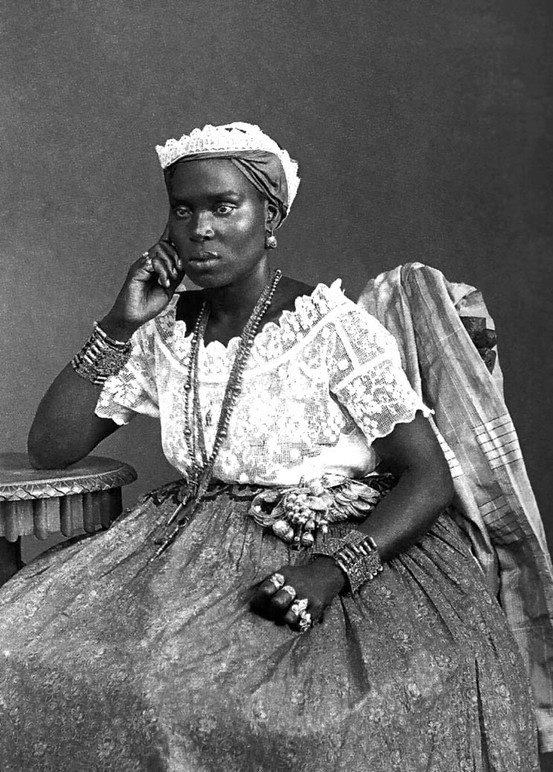Community news. The Kingdom of Dahomey had always been a trading nation exporting precious stones, ivory, animal skins, dyed cotton and palm oil to countries north of the Sahara Desert while importing copper and horses.
Later, during the 19th Century, the Kingdom of Dahomey became a leading participant in the Atlantic Slave Trade. They waged war on neighboring territories and captives were sold into slavery. A conservative estimate suggests that at least twenty percent of all those enslaved, and taken to the Caribbean, were from the Bight of Benin.
Many African societies already had a strong matriarchal structure and that organizational structure continued during enslavement. The Igbo, enslaved from southeastern Nigeria and the Akan from Ghana were matriarchal societies and had matrilineal systems of descent. Under this system, women were the head of households. Support and organization came from grandmothers, aunts and sisters who were instrumental in sustaining the family structure and who were the bedrock of plantation society.
The tradition of female leadership and resistance also manifested itself in resistance fighters such as Aqualtune and Solitude. Aqualtune, a former Angolan princess and general, escaped captivity and founded a settlement of runaway slaves in Brazil. Solitude, the Guadeloupean freedom fighter was executed the day after she gave birth for her part in the Basse-Terre uprising.
After the British Slave Trade ended, the Kingdom of Dahomey continued to trade enslaved Africans with the Arabs of North Africa. During the Franco–Dahomean Wars of 1890-1892, French troops executed many Amazons because they proved to be the last bastions of resistance.
In her book, Les Amazones du Danxome: 1645-1900, African historian, Amelie Degbelo traced the lives of some former Mino Amazons. Accounts from her book read: But when they successfully rejoined society, they exhibited, especially in squabbles virile and very energetic behavior that showed the depth of the change they had undergone.
They often beat up men who dared to affront them… [and] inspired fear among their co-wives as well as in their husbands.” Others could not be rehabilitated. They had a condescending view to matrimony believing that marriage put them in servitude to men. Regarding themselves superior, any such unions would have been a humiliation, a lowering of standards on their part. The last surviving Dahomey Amazon, named Nawi, lived to be well over 100 years. She died in November 1979.
When I was first introduced to Greek mythology as a child, I thought that the Amazons were no more than a fanciful fairy tale, nothing to take seriously. Yet, most legends are grounded in a certain amount of truth that often becomes distorted or deliberately changed to suit common beliefs and ideologies over time.
It is left to the one researching to sift through the information and discard the misleading clues that inevitably come along. In revisiting the Amazons and Gorgons, I have brought a legend out of obscurity and identified the ancient Amazons as the Tauregs of today.




